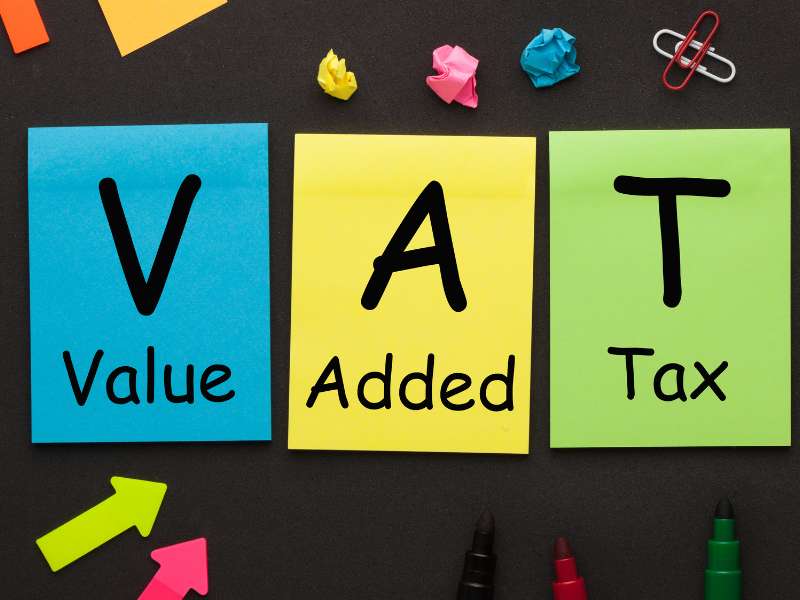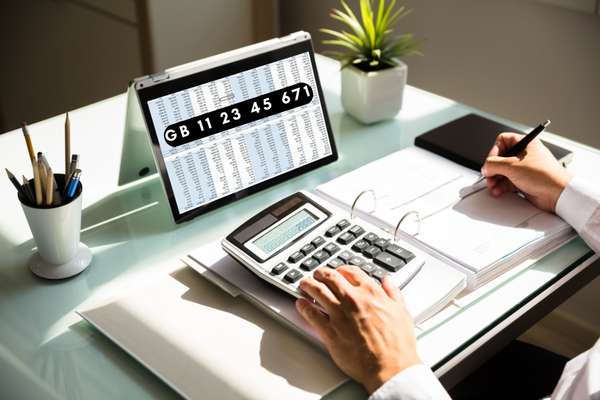Beginners Guide to VAT Registration
Starting a new company is an exciting time, but there are a lot of things you have to do to get set up correctly. One important thing on your list should be registering for a VAT number with the HMRC.
Table of contents:
- What’s VAT registration number
- Best Example of numbers
- What’s VAT registration certificate
- Who needs to register for VAT
- How do you apply for VAT
- Benefits of VAT Registration
- Frequently asked questions
What is a VAT registration number?
VAT Registration Number is a unique number assigned to businesses in the UK that are registered for Value Added Tax. The number is used by HM Revenue and Customs (HMRC) to identify businesses that are required to charge VAT on their goods and services.
The number is also used by businesses when filing their VAT return. Businesses can apply for a VAT Registration Number through HMRC and once a business has been registered, it will be issued a V A T Registration Certificate. The certificate must be kept on file and should be made available to HMRC upon request.
Examples of VAT number
There are a few different types of VAT numbers, but the most common is the 11-digit number. The first two digits represent the country, in this case, the UK and the next nine digits represent the business’ unique VAT number. The last digit is a check digit, which is used to verify the validity of the VAT number.
- Standard: 9 digits (block of 3, block of 4, block of 2 – e.g. GB999 9999 73)
- Branch traders: 12 digits (as for 9 digits, followed by a block of 3 digits)
- Government departments: the letters GD then 3 digits from 000 to 499 (e.g. GBGD001)
- Health authorities: the letters HA then 3 digits from 500 to 999 (e.g. GBHA599)
Some businesses may also be issued with a 16-digit VAT number. This number is used for businesses based in the EU that trade with other EU countries.
The first two digits represent the country, in this case, the UK, and the next six digits represent the business’ unique VAT number. The last eight digits are used to identify individual products or services that are traded between businesses.
What is a VAT registration certificate?
A VAT registration certificate is a document that proves that a business has registered for Value-Added Tax (VAT) with the government. The certificate includes the business’s VAT number, which is used to track payments and tax liabilities.
The certificate is not required for businesses to charge or collect VAT, but it may be needed to claim certain tax deductions or exemptions. eg. “some businesses may need a VAT registration certificate to import goods from other countries”.
Businesses that are registered for VAT must display their number on all invoices and other correspondence. They must also keep accurate records of all VAT transactions and file regular VAT returns with the tax authority.
Who needs to register for a VAT in the UK?
In the United Kingdom, Value Added Tax is a consumption tax placed on a product whenever value is added at each stage of the supply chain, from production to the point of sale.
The amount of VAT payable is based on the total value of the goods or services sold. Businesses that are registered for VAT must charge V A T on their goods and services, and they can also reclaim any Value Added Tax that they have paid on their own purchases.
In order to be registered for VAT, a business must meet certain criteria, such as having an annual turnover of more than £85,000. Once a business is registered, it will receive a VAT registration number, which must be displayed on all invoices.
How do you apply for a VAT in the UK?
If you’re self-employed or run a business from home, you may need to apply for a VAT (Value Added Tax) in the UK. This tax is applied to most goods and services sold in the UK, and it can be charged at different rates depending on the product or service.
⇒ In order to apply for a VAT, you’ll need to register your business with HM Revenue & Customs (HMRC).
⇒ Once you’re registered, you’ll be issued a VAT registration number. This number will need to be included on all invoices that you issue to your customers.
⇒ You’ll also need to keep accurate records of all your sales and purchases, as well as any VAT that you charge or are charged. When it’s time to file your taxes, you’ll need to include your VAT return along with your other paperwork.
The process of applying for a VAT can seem daunting, but HMRC provides plenty of resources to help you through the process. With a little bit of planning, you can ensure that you’re compliant with all the necessary regulations.
What is a VAT registration form?
A VAT registration form is a document that businesses use to register for value-added tax (VAT). The form typically asks for information such as the business’s name, address, and VAT number.
It may also request information about the business’s activities and products. The form is used to calculate the amount of VAT that the business owes.
Benefits of registering for VAT
Reduced paperwork – By registering for VAT, businesses can take advantage of the reduced paperwork that comes with being part of the system. This can include simplified bookkeeping and filing procedures
Tax deductions – Businesses may be able to claim tax deductions for certain expenses that are related to their VAT registration. This could include things like accounting and legal fees.
Improved cash flow – Since VAT is charged on the total value of a transaction, it can help improve a business’s cash flow. This is because businesses receive payments for the goods or services that they have supplied, minus the amount of VAT that has been charged.
Reduced prices for customers – In some cases, businesses may be able to offer their customers reduced prices due to the lower rates of VAT.
Frequently asked questions
- Where to find the list of VAT registered companies?
⇒ hmrc.gov.uk
⇒ gov.uk
- How to check VAT registration number?
To check if a business is registered for Value-Added Tax (VAT), you can visit the HMRC website and search for the company by name. The government website also provides a list of registered VAT companies.
- Where to log in for VAT registration?
To register for Value-Added Tax (VAT), you’ll need to visit the HMRC website and log in using your HMRC user ID and password. Once you’re logged in, you can submit your VAT registration form online.
- What is the VAT registration threshold?
The VAT registration threshold is the amount of money that a business must earn in order to be required to register for Value-Added Tax (VAT). Generally, businesses must register if they earn more than £85,000 per year. However, there are some exceptions to this rule, and businesses should check with HMRC to make sure they are in compliance.
- Who needs to register for VAT?
Most businesses in the UK must register for Value-Added Tax (VAT). This includes self-employed people and businesses that operate from home. The only businesses that are exempt from VAT registration are those that earn less than £85,000 per year. All other businesses must register for VAT if they earn more than this amount.
- What is VAT registration helpline?
If you have any questions about registering for Value-Added Tax (VAT), you can call the HMRC VAT registration helpline. The helpline is open from Monday to Friday, 8 am to 6 pm.



